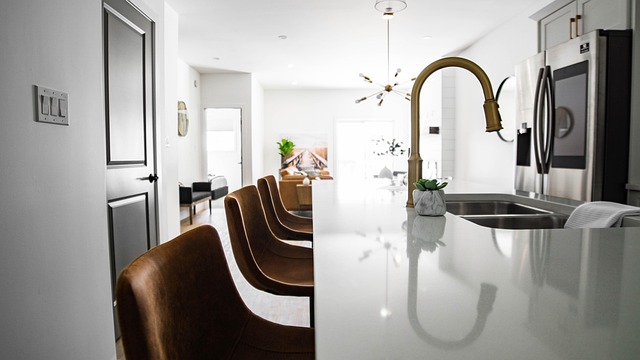For first-time home improvement enthusiasts, starting small with affordable, step-by-step DIY projects like painting and installing shelves builds confidence and skills. Investing in a versatile tool kit tailored for beginners ensures you're prepared to tackle various tasks while keeping costs down. Strategically planning one or two simple DIY projects allows you to personalize your space without breaking the bank through budget-friendly sourcing, including thrift stores and online marketplaces.
Looking to transform your home without breaking the bank? This guide is perfect for aspiring DIY enthusiasts who want to tackle home improvement projects on a budget. We’ll walk you through choosing suitable, skill-level appropriate projects that align with your financial goals. From gathering essential tools to sourcing affordable materials, get ready to embark on simple yet effective step-by-step DIY projects that will enhance your living space without the hefty price tag.
Choosing the Right Projects for Your Skills and Budget
When embarking on your first home improvement journey, it’s crucial to select step-by-step DIY projects that align with your skill level and budget. Starting with simple tasks like painting a room or installing shelfing units is an excellent way to gain confidence and avoid costly mistakes. These projects offer a great learning curve without overwhelming you with complex tools or techniques.
Remember, the key is to choose budget-friendly options that will still make a noticeable difference in your space. For instance, a fresh coat of paint can instantly brighten a room, while adding shelves allows for creative storage solutions without breaking the bank. By carefully considering your abilities and financial constraints, you’ll set yourself up for successful DIY endeavors.
Gathering Essential Tools: What You Really Need
Starting with home improvement doesn’t have to be daunting or expensive. Gathering the right tools is a fundamental first step for any beginner tackling step-by-step DIY projects. You don’t need a whole toolbox filled with advanced equipment to get started; a few essential tools will suffice. Consider investing in a set of high-quality screwdrivers (both flathead and Phillips), a hammer, measuring tape, a level, a utility knife, and a pair of safety goggles. These basics will allow you to handle a range of tasks, from hanging shelves to making simple repairs. Many hardware stores offer starter kits tailored for beginners, ensuring you get the most useful tools at a reasonable price.
Remember, it’s better to have a few versatile tools than a collection of specialized ones until you understand your needs and project scope. As you gain experience with step-by-step DIY projects, you can gradually expand your tool collection based on the specific tasks you frequently encounter around the house.
Step-by-Step Guide to Simple Yet Effective Home Improvements
Starting your home improvement journey can be daunting, but with simple step-by-step DIY projects, you can transform your space on a budget. Begin with an assessment of your needs and desires – maybe it’s revamping an outdated kitchen or adding a cozy reading nook. Once you’ve identified a few key areas, create a plan. Start small – choosing one or two projects to tackle initially will help build your confidence and skills.
Gather materials carefully; many home improvement stores offer budget-friendly options and second-hand stores are a treasure trove for unique finds. Before beginning any project, ensure you have all necessary tools readily available or consider renting what you don’t already own. With clear instructions and a bit of creativity, these step-by-step DIY projects can yield impressive results, allowing you to create a home that truly reflects your style without breaking the bank.
Sourcing Affordable Materials and Where to Save Money
When it comes to budget-friendly home improvement, sourcing materials is key. One effective strategy for beginners is to focus on affordable options. Many essential supplies can be found at thrift stores, garage sales, or secondhand shops at a fraction of their original cost. For instance, old doors, windows, and fixtures often have a new life in DIY projects. Online marketplaces and community groups are also treasure troves for discounted materials, where you can score deals on everything from lumber to lighting fixtures.
Additionally, prioritizing step-by-step DIY projects allows for more control over your budget. By tackling smaller tasks, you can avoid costly mistakes and learn valuable skills. For example, simple do-it-yourself painting projects or reupholstering an old chair are not only cost-effective but also great ways to refresh your space. Remember, saving money on materials is a significant step towards achieving your home improvement goals without breaking the bank.
For home improvement beginners, starting small with budget-friendly DIY projects is a great way to gain confidence and enhance your living space. By focusing on skills and tools you already have and sourcing affordable materials, you can achieve impressive transformations. The articles’ step-by-step guides ensure success for any novice DIYer, allowing them to tackle basic home improvements without breaking the bank.
